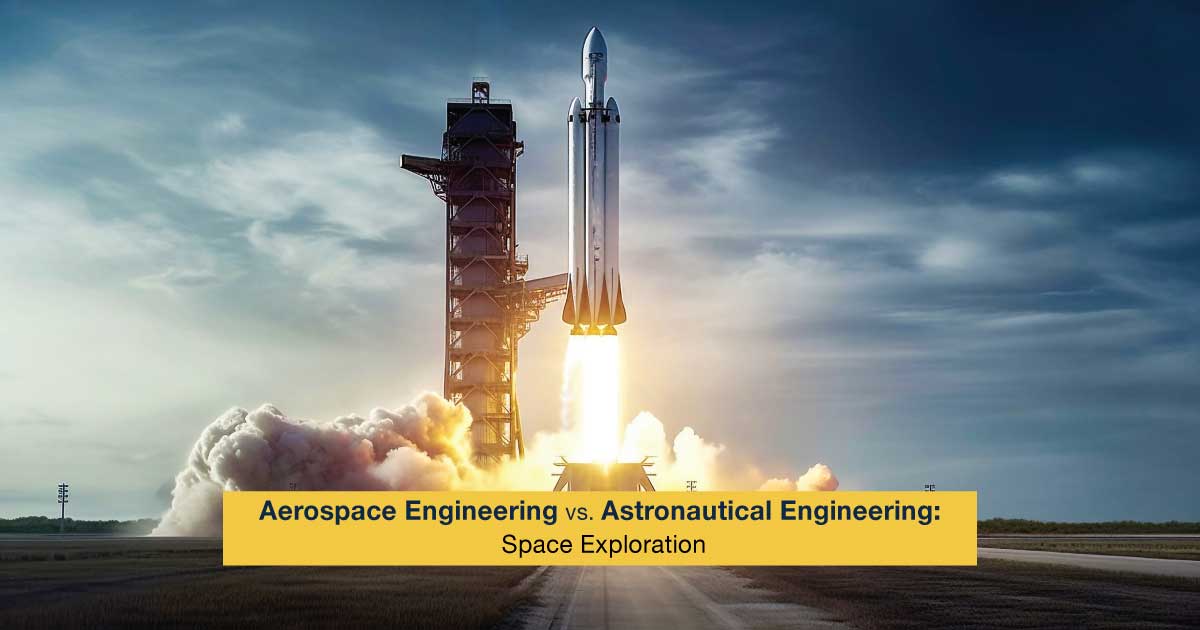FET Blogs


FET Blogs



03 June 2024
Table of Contents:
India has been home to remarkable astronauts such as Rakesh Sharma and Kalpana Chawla, whose influence extends to millions of young Indians aspiring for careers in aerospace or aeronautical engineering. Their legacies serve as beacons of inspiration for young individuals, fostering a keen interest in astronomy and space exploration. Additionally, ISRO's Chandrayaan mission, credited with the groundbreaking discovery of water on the moon, continues to shatter barriers and establish new benchmarks. Beyond its immediate scientific impact, this mission holds the potential to ignite a new wave of enthusiasm among young minds, propelling them towards careers in space exploration and scientific inquiry.
However, due to a lack of clarity, individuals often find themselves making erroneous decisions or pursuing alternative paths. Many are uncertain about the nuances distinguishing aerospace and aeronautical engineering. While both fields involve the design of aircraft, missiles, and related vehicles, there are distinct differences. Aerospace engineering serves as the overarching discipline, focusing on the design, testing, and production of aircraft, spacecraft, and associated systems. It encompasses both atmospheric and space flight, with astronautical engineering constituting a subset specialising in craft operating within and beyond Earth's atmosphere. Today, we shall learn more about these two engineering disciplines in depth to make an informed career choice.
Aerospace Engineering, a specialised branch of engineering, furnishes students with the expertise to conceptualise, manufacture, and uphold spacecraft, missiles, and weapon systems. The curriculum of a Bachelor of Technology (B.Tech.) in Aerospace Engineering not only imparts foundational engineering theories but also emphasises their practical application. Upon enrolment in the B.Tech degree, students dive deep into disciplines such as engineering mechanics, thermodynamics, fluid mechanics, heat transfer, aerodynamics, kinematics, propulsion, measurements and controls, and design. This B.Tech. programme encompasses the science and engineering of aircraft and spacecraft, encompassing aeroplanes, space shuttles, and other aerial vehicles operating both within and beyond Earth's atmosphere. The syllabus covers a wide array of subjects, including elements of aeronautics, aero-fluid mechanics, mechanics of solids, aircraft component drawing, machines and mechanisms, aircraft systems and instruments, air-breathing propulsion, and others.
Aerospace Research Engineering stands at the forefront of innovation, dedicated to advancing the efficiency, safety, and sustainability of aerospace systems. Within this specialised domain of aeronautical engineering, aerospace research engineers are instrumental in conducting groundbreaking research and development, pushing the boundaries of human flight and space exploration. The key research focus areas are as follows:
Astronautical engineering is a specialised branch of aerospace engineering dedicated to the design, development, and testing of spacecraft and rockets for exploration, communication, and various applications. This field emphasises the structural design and analysis of aircraft and spacecraft components, as well as the materials used in their construction. A B.Tech in Astronautical Engineering imparts a profound understanding of engineering principles, coupled with creative problem-solving skills to innovate solutions for complex engineering challenges. The curriculum provides a robust foundation in engineering, mathematics, and science, empowering students to analyse and design future aircraft and spacecraft. Core subjects in the astronautical engineering programme cover engineering mathematics, physics, chemistry, engineering graphics, mechanical engineering basics, environmental studies, and others to ensure a comprehensive understanding of key concepts and hands-on experience from the outset of the programme.
Astronautical engineering uses novel propulsion methods such as ion propulsion, solar sails, or nuclear propulsion to enhance our ability to explore space efficiently and effectively. Research in this area focuses on developing advanced algorithms and systems for spacecraft attitude control, trajectory optimisation, and autonomous navigation. Exploring these research areas is crucial for precision missions and operations. The key research focus areas are as follows:
Aerospace engineering enables human endeavours such as piloting aeroplanes, launching satellites, and advancing defence technology. Embarking on a career in aerospace engineering necessitates a robust foundation in mathematics and science, equipping students with the requisite knowledge and skills to contribute to aircraft and spacecraft design and operation. Aerospace engineering students play a pivotal role within aerospace companies' research and development divisions, fostering innovation. Collaborating with governmental entities such as NASA, ISRO, ESA, and defence research organisations, aerospace engineering students explore space and aviation technologies. Here are some key career paths that students can pursue after the completion of their degree:
Astronautical engineering is responsible for crafting and refining a wide array of spacefaring technologies, including rockets, satellites, planetary probes, and spacecraft capsules. These professionals work on meticulous analysis and troubleshooting to ensure the efficiency and safety of these designs. The innovative ideas generated within this field have a profound impact on both space and terrestrial travel. Leveraging their technical expertise, these engineers oversee the entire lifecycle of spacecraft, from initial design to testing and ongoing upgrades. Although distinct from astronauts, many astronauts have backgrounds in astronautical engineering. Here are some key career paths that students can pursue after the completion of their degree:
Space exploration yields a plethora of advantages for future generations, both tangible and intangible. Tangible benefits encompass the advancement of scientific understanding, the cultivation of innovative technologies, the emergence of fresh industries and employment avenues, and enhancements to life quality on Earth. For instance, space exploration unravels mysteries like the solar system's origins, confirms the presence of water on Mars, and hints at extraterrestrial life. It has also led to practical breakthroughs like satellite navigation, remote sensing, telemedicine, and renewable energy solutions. Furthermore, space exploration fosters global collaboration, economic prosperity, and educational enrichment. Conversely, some benefits are less quantifiable but no less significant. These intangible merits encompass the nurturing of curiosity, creativity, and ingenuity in young engineers. Space exploration also fosters the cultivation of a planetary perspective, environmental stewardship, and the elevation of human aspirations. Notably, space exploration ignites passion in countless students, propelling them towards careers in STEM fields as well as in the arts, humanities, and social sciences. It also encourages critical thinking, collaboration, and ethical contemplation regarding the challenges and opportunities that lie ahead.
Aerospace engineering encompasses the design and maintenance of aircraft and spacecraft, whereas astronautical engineering focuses specifically on spacecraft for exploration beyond Earth's atmosphere. Both disciplines offer extensive opportunities for research and career advancement. Aerospace engineering explores areas like hypersonic flight, electrification of aircraft, and space tourism, while astronautical engineering explores propulsion systems, spacecraft design, and space colonisation. Ultimately, space exploration offers myriad tangible and intangible benefits, ranging from technological advancements and economic growth to the cultivation of curiosity, creativity, and a global perspective among aspiring engineers. Embracing these opportunities can propel future generations towards fulfilling careers.
A1: Aerospace engineering is ideal for NASA careers in spacecraft design.
A2: Astronautical engineering focuses on space, while aerospace includes aviation too.
A3: Yes, astronautical engineers are in demand for space exploration projects.
Popular Post
16 January 2026
What is Aerospace Engineering?
16 January 2026
What is Chemical Engineering?
12 January 2026
Best Engineering Courses in India: Top 10 Courses, List, Types & High-Salary Options
07 January 2026
What is Mechanical Engineering?
Ask an Expert for Free